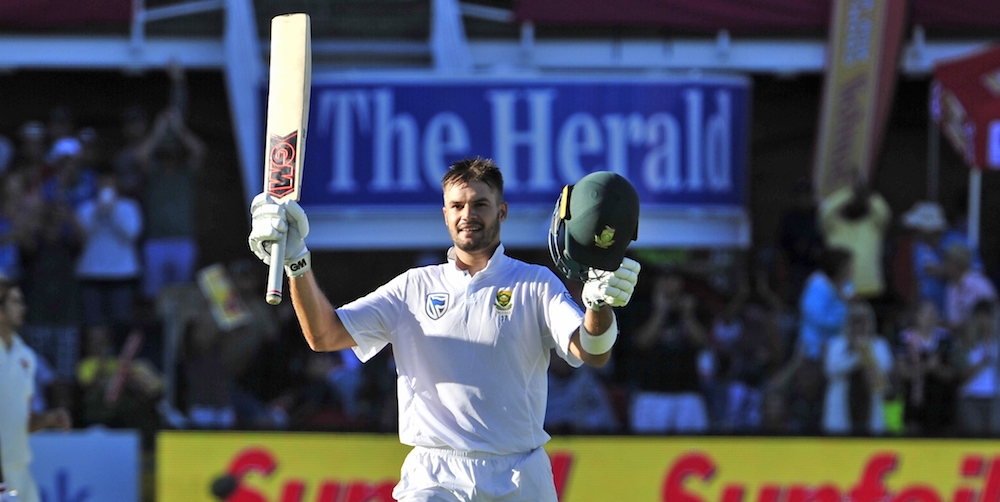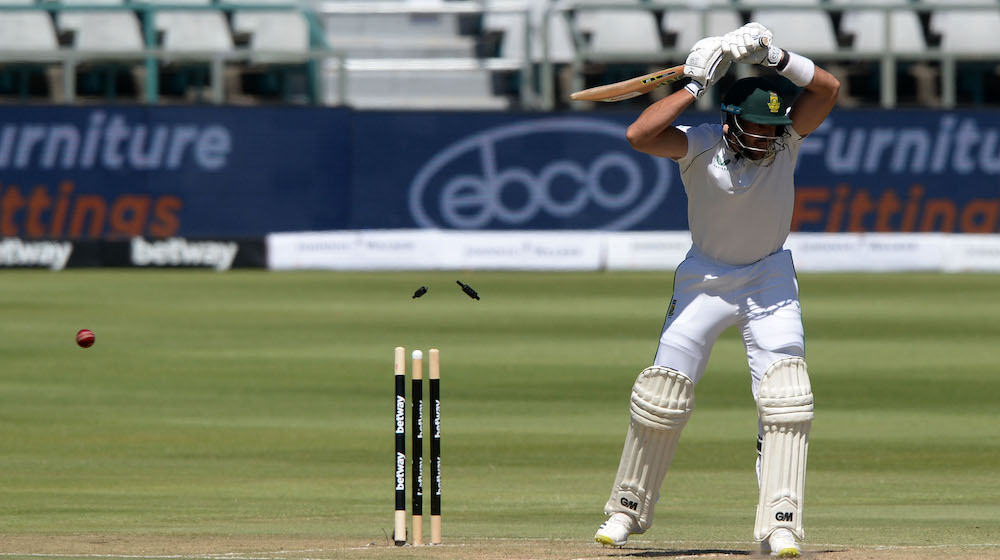If this is indeed the last we see of Aiden Markram I’ll choose to remember what he contributed, rather than what he didn’t, writes Daniel Gallan.
I made my Test debut on the same day as Aiden Markram. Admittedly we both had different roles in Potchefstroom on a hot Thursday morning back in September 2017. Months earlier I left my job to pursue a career as a sports journalist. I’d covered a few domestic cricket and rugby matches but this international fixture was a significant step up. Though the press were clustered in a ramshackle wooden hut with shoddy internet and scarcely any cover from the scorching sun, I felt like I’d made it.
Markram must have felt that too. Three years before he became the first South African captain to lift a World Cup. That it was the U19 iteration didn’t matter. His fluency with the willow, his square jaw, his perfectly coiffed hair and his humble demeanour meant he already had a horde of devoted fans behind him. When Bangladesh won the toss and bafflingly elected to bat first on a flat surface, I, and the rest of the cricket-loving public, drew breath.
Markram was everything we were promised. He opened the batting and was watchful at first but soon got into his work, flicking his first boundary through midwicket and carving his next past cover with trademark grace. Another majestic drive off the front foot would follow and then a scything cut shot exploded to the fence. Dean Elgar is no one’s idea of an elegant stroke maker but he looked positively agricultural alongside this flashy youngster who seemed to be a prototype of what batting could be.
Markram would end on 97, run-out after a calamitous mix-up that saw him stranded in the middle. As he walked off I thought that dismissal would be an amusing anecdote in the great story of his glittering career. Little did I know it would serve as a chilling metaphor, an embodiment of a near-miss, of a prize eluding his grasp, of wasted potential and the cruelty of elite sport.
But that is painting a bull’s eye around an already shot arrow. Markram scored 143 effortless runs in the next Test against Bangladesh and followed that up with 125 against Zimbabwe in Gqeberha.

Virat Kohli’s India was up next and though he struggled in the first match in Cape Town, his battling 94 in Centurion proved decisive in a 135-run win that sealed the series and proved he could navigate through adversity.
Then came Australia and a series that would define him. His second innings 143 in a losing cause in Durban is surely a contender for the best knock ever by a South African. As Micthell Starc ran rampant, and even after he had run out AB de Villiers with the game in the balance, Markram batted on, defiant and daring, driving, cutting and pulling as if he were born for this stage.
Four weeks later, with the series already won and the Australians humiliated following the sandpaper fiasco, Markram unfurled 152 runs at the Wanderers which left me breathless.
I’ll never forget that innings. High up in the press box of my home stadium I watched a superstar come of age. He struck 17 fours and one six, thwacking Pat Cummins and Josh Hazelwood as if they were village trundlers. During his partnership with De Villiers, he assumed the lead role, defying logic, and eclipsing even the immortal Mr 360. He reached 1000 runs in that Test, faster than any other South African in terms of matches played and had recorded more 50-plus scores – seven – than any of his countrymen after 10 Tests.
I met him for the first time shortly after at his favourite restaurant in Centurion, not far from his family home. He was five minutes late and would only stop apologising when I assured him that it was alright. He was affable, confident and sincere. He spoke of his insecurities as a talented youngster and how he’d admonish himself when he failed to produce on the field.
He was certain he was ready to lead the South African batting line-up for a generation and spoke of his desire to captain the Test team. He was conscious to temper his bravado with humility, promising to keep his feet on the ground and his gaze fixed on the next ball.
I had no doubt that he would fulfil his ambitions. I interviewed various people who knew him well, including youth coaches and teammates. They spoke of his tremendous talent and work ethic but they also raised his propensity for self-criticism. “No one is harsher on him than he is,” Ray Jennings, his U19 coach, said.
Failure is a natural state for any batter. Even the best fail more than they triumph. Markram knew that there would be lean spells and he was right. He managed just 40 runs across four innings in a series defeat in Sri Lanka. Scores of 78, 90 and 60 at home to Pakistan and Sri Lanka gave hope of a revival but he unravelled in India. After registering a pair of ducks in Pune, Markram punched out in frustration, making contact with a dressing room door and shattering his wrist.
Was the golden boy losing his shine? From the outside, it was hard not to draw that conclusion. Interview requests were denied. Senior players spoke of their unwavering support. Cricket South Africa did all they could to protect the heir to a long line of batting royalty that includes De Villiers, Amla, Kallis, Richards and Pollock.

A few dissenting voices could now be heard. Cricket is a cruel game and its fans can be cruel as well. Social media is awash with toxicity and those who demand perfection without ever reaching for it themselves can turn on the few who go to work with their country’s flag on their chest. Maybe we’d all been duped. Maybe those gorgeous cover drives were smokescreens to an inherent weakness. Maybe that inaugural season was nothing more than a fling. The chorus grew louder.
I held out hope. Even after injury restricted him to just one Test during England’s visit in late 2019 I held out hope. Then the pandemic hit and my consciousness constricted. I was too busy worrying about my own livelihood as a freelance journalist and the health of my loved ones to give much thought to a millionaire cricketer and his internal demons. After the birth of my son and the reordering of the world, I gazed up and saw a shell of a prodigy.
Since the Boxing Day Test against Sri Lanka in 2020, Markram has played 13 Tests, scored 585 runs at 26.59 and hit one century, a commendable fourth innings 108 in Rawalpindi in a 95-run defeat to Pakistan. He’s developed into a fine white ball batter, a credit to his fitness and willingness to innovate, but those numbers above point to a dramatic decline against the red orb.
Like many fans, I can’t help but feel a personal pang when I contemplate how his arc has veered off into the hinterland. I not only felt invested in his career, I felt like I was a part of it. I watched him take his first steps as a Test cricketer and had no doubt that he would become a titan of the format.
Watching Ben Stokes laugh as Markram top-edged a half-tracker in Manchester and depart with just 14 next to his name hurt me in a way I didn’t expect. It wasn’t just that the England captain was finding joy in a South African’s despair, it was that it was a visceral sign of how far Markram had fallen.
His 18-ball score of six in the second innings must surely be his last in Test whites for the foreseeable future. He may return and prove us right, repaying the faith and sticking two fingers up at all the critics. But even if he does he won’t be what we wanted him to be. But South Africa will play so few Tests over the next four years and with franchise cricket choking the calendar, he’s unlikely to spend too much time honing his game on the first-class circuit. Perhaps his time has passed.
I’ll always have that summer of 2017/18, to this day the best summer of South African cricket I had the privilege of watching from press boxes around the country. If this is indeed the last we see of Aiden Markram I’ll choose to remember what he contributed, rather than what he didn’t. He’s given us so much already. It’s a testament to his talent that we’re left wanting so much more.











